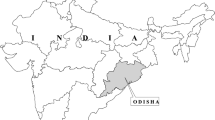Abstract
Global climate change is nowadays a widespread phenomenon. Earth’s climate is changing and this affects not only the temperature, rainfall, and weather patterns, but is also expected to stimulate the emergence and spread of several infectious diseases. This applies to both climate changes as a whole as well as the individual factors such as temperature, rainfall, humidity, etc. Changes in climate and weather patterns impact the survival, distribution, reproduction of disease pathogens, vector, and hosts as well as the availability of transmission environment. Diseases that are new to the field of medicine are appearing. These include Ebola, Lyme disease, Hantavirus, etc. while the global concern is the climatic impact on vector-borne diseases, such as Malaria, Chikungunya, Dengue, Yellow Fever, and Zika. However, the observed data is too short, the impact of climate independent factors too great, with lack of understanding of the degree to which climate affects the disease patterns, a small amount of uncertainty still remains on this subject. This review examines the possible effects of changing climate on vector-borne diseases, the relation between various climatic variables and pathogen/vector as well as the mitigation measures against vector-borne disease risks with respect to Dengue, Chikungunya, and Zika, respectively.
Access this chapter
Tax calculation will be finalised at checkout
Purchases are for personal use only
Similar content being viewed by others
References
Barrera R, Amador M, MacKay AJ (2011) Population dynamics of Aedes aegypti and dengue as influenced by weather and human behaviour in San Juan, Puerto Rico. Plos Neglected Trop Dis 5(12):e1378
Brady OJ, Golding N, Pigott DM et al (2014) Global temperature constraints on Aedes aegypti and Aedes albopictus persistence and competence for dengue virus transmission. BMC 7:338
Campbell LP, Luther C, Moollanes D, Ramsey JM, Danis-lozano R, Peterson AT (2015) Climate change influences on global distributions of dengue and chikungunya virus vectors. Royal Soc 370(1665):20140135
Chen PS, Feng TT, Lin CK, Yang CY, Chan CC, Young CY, et al (2010) Ambient influenza and avian influenza virus during dust storm days and background days. Environ Health Perspect 118:1211
Gathany J (2006) Aedes aegypti. Centers for Disease Control and Prevention’s Public Health Image Library (PHIL)
Haines A, Kovats RS, Lendrum DC, Corvalan C (2006) Climate change and human health: impacts, vulnerability and mitigation. Lancet 367(9528):2101–2109
Kamal M, Kenawy MA, Rady MH, Khaled AS, Samy AM (2018) Map** the global potential distributions of two arboviral vectors Aedes aegypti and Aedes albopictus under changing climate. PLoS ONE 13(12):e0210122
Kearney M, Shine R, Porter WP (2009) The potential for behavioural thermoregulation to buffer “cold-blooded” animals against climate warming. PNAS 106(10):3835–3840
Mirski T, Bartoszeze M, Bielawska-Drozd A (2011) Impact of climate change on infectious diseases. Pol J Environ Stud 21(3):525–532
Modis, Coudera, Weaver (2017) Immunology of viral infections with a high impact in Mexico: Dengue, Chikungunya, and Zika. Elsevier 19(7):198–207
Ogden Nicholas H (2017) Climate change and vector-borne diseases of public health significance. FEMS Microbiol Lett 364(19):186
Rai PK, Nathawat MS, Onagh M (2012) Application of multiple linear regression model through GIS and remote sensing for malaria map** in Varanasi District, INDIA. Health Sci J (Int J Nurs Res Rev) 6(4):731–749. ISSN 1108–7366E. Available at http: www.hsj.gr/volume6/issue4/6414
Rai PK, Nathawat MS, Rai S (2013a) Using the information value method in geographic information system (GIS) and remote sensing for malaria map**; a case study from India. Informat Prim Care (University of Surrey, U.K.), 21(1):43–52. Available at: https://doi.org/10.14236/jhi.v21i1.38. ISSN 1475-9985
Rai PK, Nathawat MS (2013b) GIS in health care planning: a case study from India. Forum Geogr J (Romania) 12(1):152–163. ISSN No: 2067-4635. Available at: https://doi.org/10.5775/fg.2067-4635.2013.180.d
Rai PK, Nathawat MS (2013c) Application of GIS & statistical methods to select optimum model for malaria susceptibility zone and verification of the susceptibility methods by area under curve (AUC): a case study, scientific annals of “Alexandru Ioan Cuza” University of Iasi—Geography series (SciGeo J Romania) 59(2):73–94. ISSN: 1223-5334. Available at: http://www.analegeo.uaic.ro/index.php/SciGeo/issue/view/20
Rai PK, Nathawat MS (2014) Utilization of health care services in Varanasi district: a geographical analysis. Geog Malays J Soc Space (online) 10(2):14–33. ISSN: 2180-2491. Available at: http://www.ukm.my/geografia/v1/?cont=v&item=2&art=449&ver=loc
Rai PK, Nathawat MS (2017) Geoinformatics in health facility analysis. Springer International Publishing, Switzerland ISBN (Hard copy): 978-3-319-44623-3. eBook ISBN: 978-3-319-44624-0. http://www.springer.com/gp/book/9783319446233. https://doi.org/10.1007/978-3-319-44624-0
Reinhold J, Lazzari C, Lahondère C (2018) Effects of the environmental temperature on Aedes aegypti and Aedes albopictus mosquitoes: a review. MDPI 6;9(4):158
Southwood T, Murdie G, Yasuno M, Tonn R, Reader P (1972) Studies on the life budget of Aedes aegypti in Wat Samphaya, Bangkok, Thailand. Bull World Health Organ 46(2):211–226
Sutherst RW (2004) Global change and human vulnerability to vector-borne diseases. Am Soc Microbiol 17(1):136–173
Tedjou AN, Kamgang B, Yougang AP, Njiokou F, Wondji CS (2019) Update on the geographical distribution and prevalence of Aedes aegypti and Aedes albopictus (Diptera: Culicidae), two major arbovirus vectors in Cameroon. PLoS Negl Trop Dis 13(3):e0007137
World Health Organization (2020) Flooding and communicable diseases fact sheet. https://www.who.int/hac/techguidance/ems/flood_cds/en/. Accessed on 1 July 2020
Wu X, Lu Y, Zhou S, Chen L, Xu B (2016) Impact of climate change on human infectious diseases: Empirical evidence and human adaptation. Elsevier 86:14–23
Author information
Authors and Affiliations
Corresponding author
Editor information
Editors and Affiliations
Rights and permissions
Copyright information
© 2021 The Author(s), under exclusive license to Springer Nature Switzerland AG
About this chapter
Cite this chapter
Pandey, V., Ranjan, M.R., Tripathi, A. (2021). Climate Change and Its Impact on the Outbreak of Vector-Borne Diseases. In: Rai, P.K., Singh, P., Mishra, V.N. (eds) Recent Technologies for Disaster Management and Risk Reduction. Earth and Environmental Sciences Library. Springer, Cham. https://doi.org/10.1007/978-3-030-76116-5_13
Download citation
DOI: https://doi.org/10.1007/978-3-030-76116-5_13
Published:
Publisher Name: Springer, Cham
Print ISBN: 978-3-030-76115-8
Online ISBN: 978-3-030-76116-5
eBook Packages: Earth and Environmental ScienceEarth and Environmental Science (R0)




